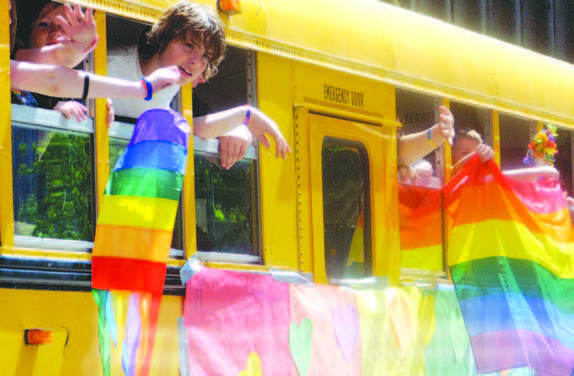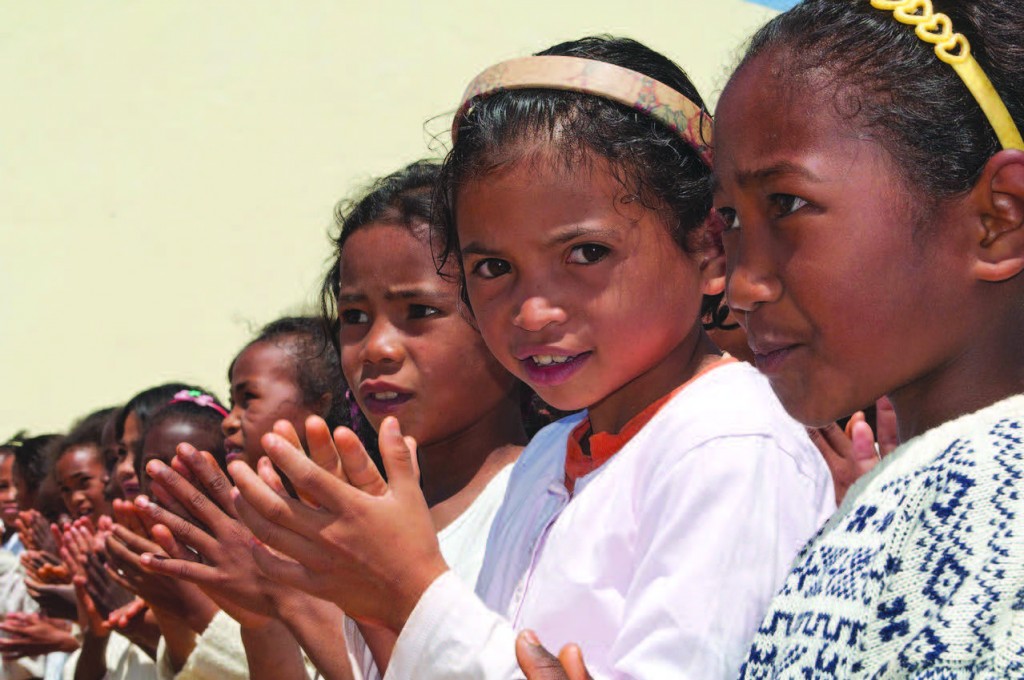 (Editor’s Note: Teacher Lyndsey Schlax of the Ruth Asawa San Francisco School of the Arts recently taught the nation’s first on-s
(Editor’s Note: Teacher Lyndsey Schlax of the Ruth Asawa San Francisco School of the Arts recently taught the nation’s first on-s
ite high school LGBT course, according to district officials. She will resume teaching that groundbreaking class next fall. This semester, she is teaching a new Ethnic Studies course. It is a popular elective among the school’s Social Science offerings. In this column, students from her class will be anonymously sharing with the San Francisco Bay Times their thoughts about related matters, and what they are learning.)
Curls
Student, 12th Grade
Caught in a tangled mess, the tiny monster with an elongated rubber body and spikes for legs tugged against the endless mass of black and brown wires. As a hand reached out to rip apart the spiky creature from the Velcro mess, it tore up the binding locks, splitting and stripping down each individual strand. This was when I realized that my soul mate, my one and only, the heart of my childhood—my hairbrush—had become my worst nightmare.
Growing up in a Vietnamese household, I was the odd duckling with frizzy, tangled tresses. Everyone else–my family and my friends–had a variety of mildly wavy to pin-drop straight sticks. Just like them, I have always been taught to brush my hair everyday. Little did I know, brushing actually disassembled my loopy locks.

In my earlier years, I never realized how different I was from everyone else. My unruly mane became the clay my mother would craft into all sorts of braids, pigtails, buns and ponytails. My world revolved around plastic colorful hairclips and hair ties. When middle school arrived, however, things took a turn. There was this sudden urge to fit in.
Everyone had beautiful tresses that flowed in the wind, while all I had was an old, ragged bush. I began to find myself in a confused loop of ideas, experimenting with interesting hairstyles. I tried everything from the “short-bob” to the “Amy Winehouse Beehive Bun.” Nothing felt comfortable, though. Growing insecure, I began to pull myself in. Timid and shy, I kept the wild wires in a low ponytail, never letting them down for two years.
“Curly hair looks so messy and dirty!” “You should straighten your hair! It will look better!” “You’re Asian. Aren’t you supposed to have straight hair?” “Your hair is so…poofy.” “What are you? I know you’re Asian, but what kind?”
The voices of society possessed my mind, pressuring me to kill the curls, and to suppress them with the extreme heat and chemicals that would forever flatten their curves. As I conformed, as I camouflaged, I decided to permanently straighten my curls.
The glow of my new silky smooth mane awed people everywhere I went. I was afraid of their reactions. Even though I looked like everyone else, I never felt that way. It was an illusion to satisfy their blinding desires. The curls, however, started to seep out of my roots, and the compliments stopped rolling in. Half curly, half straight, the strands began to look strange.
At the same time my curls lurked back in, a revolution boiled up inside of me. Entering high school, I wiped out the quiet, insecure girl and introduced a new sense of pride, growing out my curls, snipping off the straightened hair. I was going to wear my natural hair everywhere and wear it proud. I went to swim practice more often to keep my mind at ease. The chlorine made my hair lighter and lighter. I felt weightless. I felt free.
After studying numerous YouTube tutorials on how to tame the twisted twigs on my head—sleeping in braids with Argan oil, deep conditioning, detangling and never brushing my hair—I have finally achieved the art of maintaining and accepting my unruly locks. These are wild locks that will grow how they please. These are the twirly tresses that define who I am.
Half and Half
Student, 11th Grade
My hair is blonde, my eyes are green, and my skin is light, but I have a white dad and a Latina mom, so I am biracial–half white, half Nicaraguan. No, I am not fluent in Spanish. Yes, I am white passing, which means that I can go out and enjoy white privilege despite my Latina heritage. No, I am not just a “white girl pretending to be Hispanic” when I call myself Nicaraguan, talk about Nicaraguan culture, or take pride in my Nicaraguan heritage.
In a recent Ethnic Studies class, we discussed the disconnect many American racial and ethnic minorities feel from their cultures. What especially resonated for me was what a few students said about the mixed race experience and how it feels to look like one thing and yet to be another, to be constantly questioned and erased.
I am tired of needing to explain myself or for feeling guilty for expressing an identity I’ve had since I was born. I am tired of the way people continue to deny the existence of gray areas in our world, whether they are erasing biracial people, bi or pansexual people, or nonbinary people. I am white. I am Nicaraguan. I am not gay or straight. Nonbinary people have the right to exist and feel validated for their existence. We live in a world of gray area, not a world of binary or black and white, and we need to learn to accept those of us who do not fit into one category or another.
Second Generation Immigrant Challenges
Student, 12th Grade
My mother, born in the Philippines, moved when she was 12 to the United States. She eventually lost her accent, but was able to retain her native language. My father was born in Burlington, Washington, and never learned Tagalog because his father, who served in the Navy, wanted him to assimilate as much as possible with American culture.
It seems that in almost all cultures, second generation immigrants feel a tremendous amount of guilt about not speaking a parent’s native language or about their unintentional ignorance concerning their people’s history and way of life. In a city such as San Francisco, cultural identity is muddled, which makes it hard to identify with a particular group. I personally have been in turmoil with my unclear cultural identity, wondering if I am Filipino enough or if I am whitewashed.
Embracing American culture is difficult, because all I know and have ever known or learned from the culture I live in says that my skin color makes me less American. In addition, the lack of education about the histories of Filipinos has made it difficult to fully understand the culture my mother grew up in and, to some extent, my extended family. Another reason for the guilt that second generation immigrants often have are the extreme disparities in socio-economic class that can make one feel undeserving of their life in the first world.
We are stuck in an in-between space, a gray area. We may never understand the struggles out parents faced when uprooting their entire lives and immigrating to a different country. On the other hand, we have not yet been fully integrated into American culture.
This sometimes results in being left out of conversations during family gatherings because I don’t speak the language, and being teased by my parents for not having a larger group of friends who are Filipino. They grew up in a time that was less accepting of people with colored skin, so they were forced to come together for support. Although racism is nowhere near close to being eradicated from our culture, my generation and future generations, especially in culturally diverse cities, are raised in a more accepting environment. In no way are my parents trying to make me feel bad. They just don’t want the Filipino culture to be lost, and neither do I.
It is a difficult task for second generation immigrants to juggle, looking to their past histories and cultures while forging a new one. Hopefully there will be more ethnic studies classes such as this to help us find a good balance.
Recent Comments